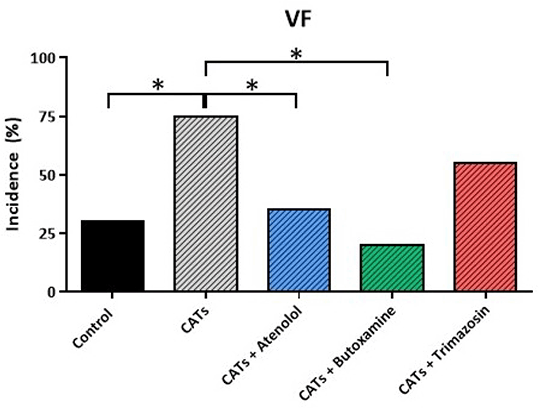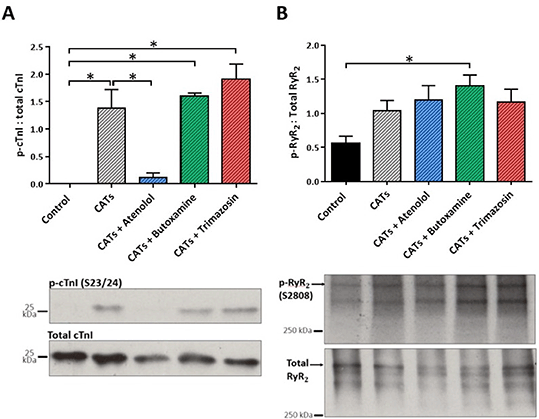| 085P London, UK Pharmacology 2016 |
Identification of the adrenoceptors that mediate facilitation of ischaemia-induced ventricular fibrillation in the rat heart in vitro
Introduction
Sudden cardiac death (SCD), most commonly caused by myocardial ischaemia manifested as ischaemia-induced ventricular fibrillation (VF), is a poorly met therapeutic target (1; 2). Catecholamines may facilitate ischaemia-induced VF when acting within the ischaemic zone (IZ) (3). Separately, circulating catecholamines acting within the uninvolved zone (UZ) and border zone of the IZ may also facilitate VF. We have previously shown in the rat nominally denervated, regionally ischaemic Langendorff perfused heart, that the low risk of VF associated with a small IZ is increased by perfusion with catecholamines (mimicking circulating catecholamines) (4). In the present study we have examined the receptors responsible for this facilitation of ischaemia-induced VF.
Methods
Male Wistar rat hearts were perfused with modified Krebs solution (3 mM K+) before randomised and blinded switch to vehicle (Krebs + 50 µM ascorbate), a previously validated (4) mix of catecholamines (vehicle + 313 nM noradrenaline and 75 nM adrenaline), or catecholamines + 1 µM antagonist (atenolol-β1, butoxamine-β2, or trimazosin-α1), followed by 30 minutes of regional ischaemia (distal ligation of the left coronary artery to create small IZs; n=20/group). Samples of UZ (from the right ventricle of perfused hearts) were snap frozen, processed for western blotting, and probed for the phosphorylation of cTnI (β1 signalling) and RyR2 (β2 signalling) (n=5/group) (5). The antagonist concentrations used were chosen for specificity and selectivity by prior assay using rat isolated aortae (data not shown).
Results
Catecholamines increased VF incidence and this facilitation was blocked by atenolol and butoxamine but not trimazosin (figure 1).
The catecholamine-induced increase in heart rate (p<0.05) was abolished by atenolol (p<0.05), reduced by half by butoxamine (p<0.05), but not affected by trimazosin (data not shown).
Catecholamines elevated p-cTnI, an effect blocked by atenolol and unaffected by butoxamine and trimazosin (figure 2A). The RyR2 western blots were less clear, as although butoxamine facilitated the effect of catecholamines as expected (increased p-RyR2), unexpectedly atenolol had no inhibitory effect (figure 2B).
Conclusions
Collectively the data show that catecholamine facilitation of ischaemia-induced VF is most likely mediated by β1 and β2 but not α1 adrenoceptors.
References
1. John RM et al. (2012). Lancet, 380(9852): 1520-1529.
2. Adabag AS et al. (2010). Nat Rev Cardiol, 7(4): 216-225.
3. Schomig A et al. (1987). Circ Res, 60(2): 194-205.
4. Wilder CDE & Curtis MJ (2015). J Mol Cell Cardiol, 86: S1-S78, abstract P-05-07.
5. Schmid E et al. (2015). Nat Med, 21(11): 1298-1306.

Figure 1: VF incidence in hearts with small IZs during 30 minutes of regional ischaemia. *p<0.05

Figure 2: Quantification of western blots probed for (A) p- and total cTnl, and (B) p- and total RyR2. Mean±SEM; *p<0.05

